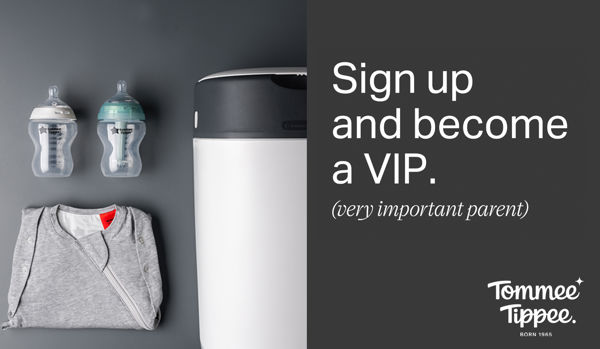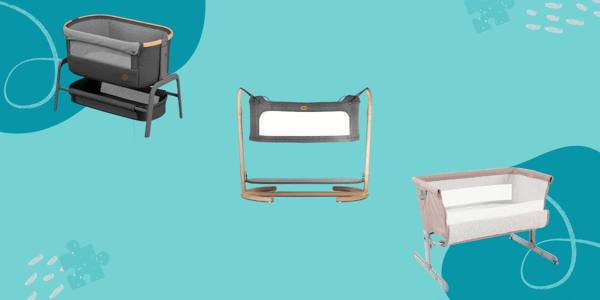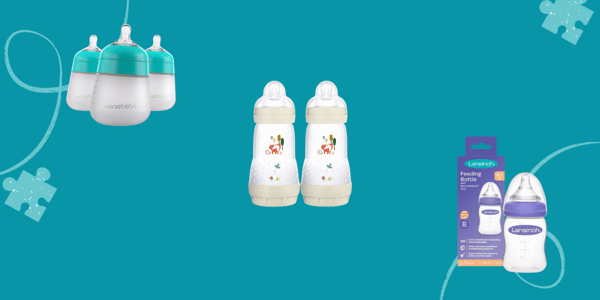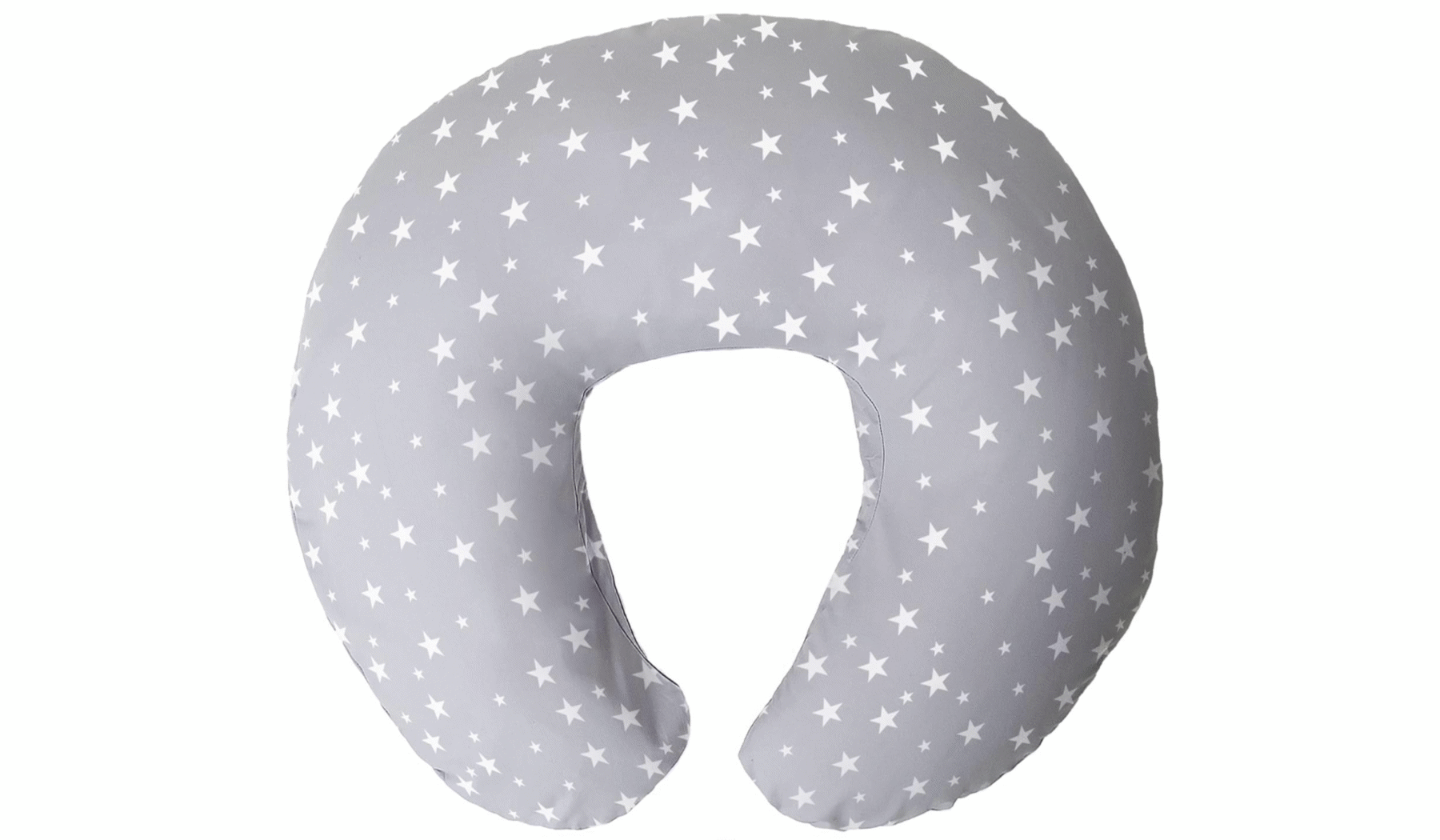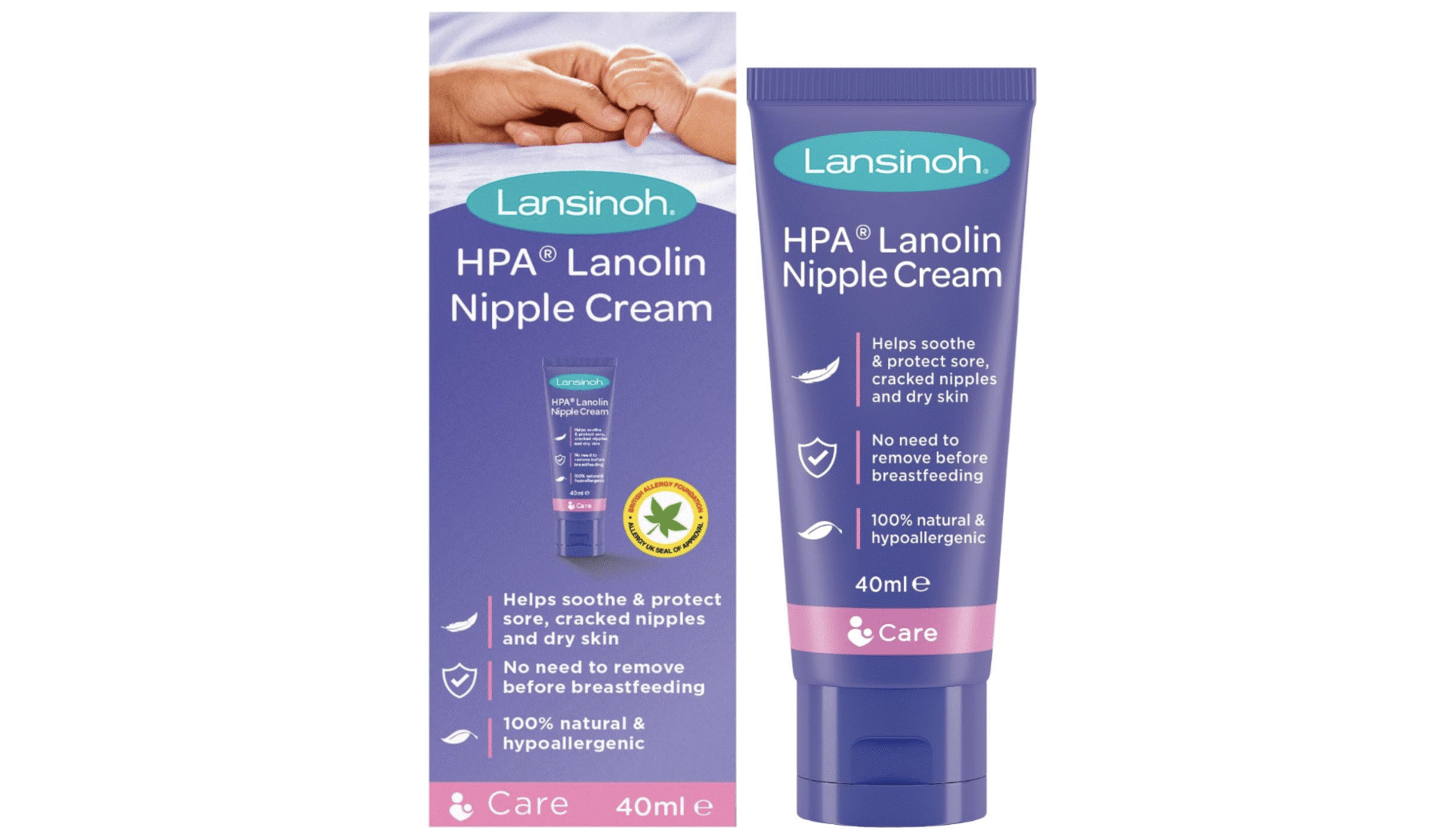Newborn
Babies undergo many changes during the first month of life, including growing! The average weight for a baby at birth is around 3.1 - 3.4kg with a length of around 48-51cm.
During the first month, they are set to grow 2.5 - 3.8cm and gain almost a whole kilo. This sounds like a lot for their size, but you should remember that babies tend to lose weight in the first 3-5 days of life and regain it with a little growth spurt, usually seen around day 7-10.
Boys will typically grow heavier and taller than girls and have larger heads. According to the WHO growth charts, by 1 month old, your baby girl should weigh on average 4.2kg (9lbs 4oz) and be around 54cm (1ft 9.3in) tall, and boys should weigh around 4.5kg (9lbs 15oz) and be 54.5cm (1ft 9.5in) tall, on average.
These numbers are rough guides and are the 50th centile (the average) from the WHO Growth Charts in your Personal Child Health Record ('red book'). This is where your midwife, health visitor or GP will plot your baby's growth at each monthly visit. Around week 3, your baby will start to have another little growth spurt that lasts until around week 6, so it's entirely normal for your baby to be cluster-feeding during these times of rapid growth.
If your child was born vaginally, their head might be a bit conical at first as their unfused skull allows the plates to overlap and narrow the head for an easier exit. Over the first month, their heads will round out, provided they've not spent too much time on their backs, which can cause the back of the skull to flatten as it develops.
Another physical change you may see is your child's skin and hair colour. While genetics determine the eye colour and amount of melanin in the skin, you may be intrigued to know that the skin shade your baby is born with isn't permanent. Because of the blood vessels close to the surface, combined with the squeeze through the birth canal, if given birth that way, babies are typically very pink/ purple at birth, which can affect the appearance of their skin.
Over a few months, this colouring will settle, and their true skin shade will show through as they adapt to their environment. Speaking of skin, you may have noticed a few small pimples around the 4th week on their cheeks, chin, or forehead. This is normal and is just a bit of baby acne. These appear due to oil production in the skin.
Keep their skin clean using mild soap and water on a cotton pad. Breast milk is also a great anti-inflammatory, antimicrobial and antibacterial treatment for many skin issues. Dot some milk on the spots, and they can disappear!
Did you know? – Breastmilk is also thought by many to help heal cuts, scrapes, cracked nipples, spots, nappy rash, teething pain, cradle cap, and even clear a stuffy nose!
Their eye colour can take a couple of months to settle to their true shade, but it's always fun guessing what colour your blue or grey-eyed babe will turn into. If they have dark eyes at birth, they typically stay dark hazel or brown. Babies with light-coloured eyes can develop into green, blue, or even light hazel and grey shades. This colour change usually happens once they are around 6 months old, but you can sometimes see slight changes as early as the first month. It is worth noting that their eye colour can continue to change throughout their early childhood.
Not all babies are born with much hair, either. Some babies are born with thick heads of hair, and others are almost completely bald! Although the pigment is already determined in their DNA, they can cycle through various shades before finally settling on their permanent hair colour later in childhood.
Like the skin, it can change with sun exposure; this time, it lightens or 'bleaches'. Your baby's hair can also fall out in the first few weeks as their follicles are very fragile, and they might develop bald spots where their head rubs against their mattress. If breastfeeding, you can help support the healthy development of your baby's skin, hair, and nails by ensuring you have a well-balanced diet, take multivitamins, and ensure you both get enough vitamin D through safe sun exposure or as a supplement.
Over the next few weeks, your baby's umbilical cord stump will eventually dry out, turn black, and fall off (usually within about two weeks). In the meantime, be gentle with it; folding down the front of your little one's nappy below the stump by about an inch can help minimise rubbing. Keep the stump dry and stick to sponge baths until it falls off. Contact your health visitor if the cord hasn't fallen off after two weeks or if you notice any redness, swelling, pus oozing, or a pink, moist bump, as these are signs of infection.
Another metric routinely measured at your health visitor appointments for the first two years of their life is their head circumference. We track this as their brain constantly grows and develops as they take in the world and gain new skills. Like a little growth spurt, the head size doesn't grow steadily or incrementally over a long period; it expands rapidly over a very short time, by an average of 2cm per month (half a centimetre per week) until they are 3 months old. Their skull plates are still growing and fusing (they won't have fused until around 12 months), so be careful of their soft spot!
By the end of the first four weeks, your baby should have straightened out their curled-up position. He or she will be stretching out their arms and legs and arching their back occasionally as they notice they have so much more space outside the womb! At birth, your midwife will check their hip movement for hip dysplasia when the hip bones aren't sitting in the hip joint or tend to move out effortlessly. They do this by spreading their legs and rolling their hips back and should hear a click.
Finally, as your baby's temperature regulation hasn't yet developed and they have no insulating layer of fat and cannot sweat or shiver, it is important to dress them appropriately for the ever-changing weather.
Initially, you may feel like your newborn only knows how to feed, sleep, and cry, but so much more is happening inside their heads! They're sponges from the moment they're born, soaking up all the sights, sounds and textures of the world, constantly watching you, listening and observing. Your baby won't be able to demonstrate much cognitive development in these early weeks, but you should watch for progressions with their eyesight and hearing. By the end of the first month, your baby should be able to track you with their eyes and react to loud sounds.
By 4 weeks old, most babies will:Sensory cards with high contrast, such as black and white shapes and lines, are great for their visual development and stimulating. They cannot yet tell the difference between colours of the same brightness, so sticking to high-contrast visuals allows them to maintain focus.
Between birth and 1 month, your baby's hearing will develop. Whilst in the womb, they have all your digestive system's sounds, heartbeat, and the muffled world outside to listen to 24/7, so they will find comfort in background noise, even whilst they sleep. Most people think you should be as quiet as possible while the baby sleeps, but in fact, this just makes them more sensitive to sounds. Keeping a white noise machine on, a vacuum cleaner, the washing machine, a heartbeat sound, or the radio on low can help them sleep through anything later!
While there is no background noise, your baby's ears are constantly listening for noises, but they are also quite sensitive to loud sounds like a sudden dog's bark or a car horn. These sudden noises can startle your baby and cause them to jump or cry – don't worry; this is just a reflex!
The first four weeks of a baby's life are filled with emotional and social development. During this time, babies experience a range of emotions, develop attachments to caregivers, and begin to communicate in their unique way. One of the key emotions that babies experience in the first four weeks is distress. This can be caused by hunger, discomfort, or overstimulation.
Babies communicate through crying so it's often difficult to distinguish precisely what is wrong. Respond promptly to their cries, as this helps to build trust and a sense of security. In the first four weeks particularly, it is not recommended to begin any sort of sleep training using variations of the ‘cry it out’ method.
Another important emotion that babies experience in the first four weeks is contentment. When a baby's needs are met they may display signs of contentment such as relaxed facial expressions, peaceful body language, and occasional cooing. You can promote a sense of contentment in babies by providing regular feeding, nappy changes, and opportunities for rest.
Babies may prefer certain people or objects as they begin to form attachments to their caregivers. This is known as social referencing and it helps babies to develop a sense of familiarity and comfort in their environment. Babies may also prefer certain types of touch or interactions such as gentle rocking or soft singing. Rocking your baby to sleep is a lovely way to soothe them and build trust and safety.
During the first four weeks, babies also begin to develop their unique communication styles. They may use facial expressions, body language such as clenching their fist or turning their head, and vocalisations such as cries, grunts, or coos to express their needs and preferences. Caregivers can help to support this development by observing and responding to the baby's cues, such as making eye contact, mimicking their expressions, and responding to their coos.
Fine motor development refers to the development of small, precise movements in the hands and fingers necessary for a wide range of tasks, such as grasping, manipulating objects, and writing.
They’re often referred to as ‘hand and finger skills’ and as your little one gets older, they’ll be important for all of the more fiddly actions, such as tying their laces, buttoning up clothes, and eventually learning to write. Fine motor skills tend to develop slightly slower than gross motor skills and you'll likely notice your little one start to control their arm and leg movements before smaller muscles.
At birth, babies have very little control over their movements and reflexes. However, as they grow and develop, they gain more control over their muscles and gradually develop the ability to perform increasingly complex movements, including pincer grip and drawing.
In the first few weeks of life babies typically display several reflexive movements essential for survival. These include the rooting reflex, a reflexive turning of the head in response to touch on the cheek or mouth, and the sucking reflex, a reflexive sucking motion of the mouth in response to a nipple or finger.
Babies gain more control over their movements and reflexes as they grow and develop. They develop greater hand-eye coordination and reach for objects in their environment. At around three weeks, babies can typically briefly grasp objects with their hands but cannot yet release them intentionally or consciously until they are around four weeks old.
By providing babies with various safe, age-appropriate toys and objects to manipulate, you can help stimulate the development of fine motor skills. Toys particularly beneficial for fine motor development in the first four weeks include soft, textured objects that can be grasped easily and cause-and-effect toys that produce sound or light when touched. Simple rattles or toys with bells or chimes can be particularly engaging for babies at this age.
As babies grow and develop they may also benefit from simple finger and hand exercises, such as opening and closing the hands or playing finger games. These activities help build strength and dexterity in the hands and fingers, laying the foundation for fine motor skills.
Gross motor development refers to the development of large muscle groups and movements in the body, such as rolling over, crawling, walking, and running. In the first four weeks of life babies undergo significant changes in their gross motor skills as they learn to control their bodies and movements.
At birth, babies have little control over their movements and are largely dependent on reflexive movements for survival, such as the Moro reflex, which causes them to spread their arms and legs when startled. However, as they grow and develop, babies lose these reflexes, gain more control over their bodies, and develop the ability to perform increasingly complex movements.
Babies spend much of this early time sleeping, eating, and adjusting to life outside the womb. However they also begin to develop a greater awareness of their surroundings. They may display some early signs of gross motor development, such as kicking and moving their arms and legs, which they learnt to do very quickly while still in utero!
Around two weeks of age, babies typically develop the ability to lift their heads briefly when lying on their stomachs. However, they cannot support the weight of their heads for extended periods. This early head control is an essential precursor to future gross motor skills, such as crawling and walking! At around four weeks babies should typically be able to hold their heads up briefly when supported in a seated position; however, they can still not support their heads independently, so don't rush into seating them upright and unsupported for another few months.
One of the most important factors in promoting gross motor development in babies is providing opportunities for movement and exploration. By providing babies with plenty of time and space to move and play, caregivers can help stimulate gross motor development. A play mat or rug is a great place to enjoy sensory activities such as tummy time. Babies are placed on their stomachs for short periods throughout the day, which can be particularly beneficial for promoting gross motor development. Check out our top picks of the best baby play mats.
Tummy time helps strengthen the neck, shoulders, and back muscles necessary for lifting the head and supporting the body. They don't always like this at first, so a few minutes every few hours will help their muscle development. You don't always have to do it on the floor, either. Babies laying on their tummies on your chest still counts as tummy time!
Toys that encourage movement, such as balls or rattles, can be particularly engaging for babies at this age, as they allow them to practise stretching to reach and rolling. Baby activity gyms with high-contrast ribbons, wooden rings and other easily visible/graspable toys are especially stimulating and enriching to help develop these skills.
Feeding a newborn baby can be one of the most challenging aspects of parenting, particularly in the first few weeks when both mother and baby are still learning. Understanding how much milk your baby needs and how often to feed a newborn can help ensure they get the nutrition they need to thrive. Below we will explore baby feeding schedules in the first four weeks, how to achieve a good latch, identify tongue ties, and what equipment is needed for feeding.
In the first few weeks of life, babies need to be fed frequently to ensure they receive enough nourishment to grow and develop. Newborns should eat at least 8-12 times per day, or every 2-3 hours, and may need to be woken up for feedings during the first week or so, especially if breastfed. For more on this, check out how often to feed your newborn.
Breast milk is widely considered to be the best source of nutrition for newborn babies, as it contains all the necessary nutrients and antibodies to support their growth and development. Babies typically require frequent feedings in the first four weeks of life as their stomachs are small and rapidly growing.
Newborns typically need to nurse at least 8-12 times daily, or every 1-3 hours, to meet their nutritional needs. They generally consume around 2-3 ounces of breast milk per feeding in the first few weeks of life. This can increase to 3-4 ounces per feeding by week four.
When feeding, ensure you allow them time to feed at each breast every feed for around 10-20 minutes per side. Whichever breast you finish on should be the first breast you start on at the next feed. This is to ensure your baby gets both the fore and hind milk from both breasts, to provide as many nutrients and as much fatty milk as needed to satisfy their hunger and grow.
To achieve a good latch while breastfeeding, it's important to position your baby correctly. Head here for more on breastfeeding positions.
It's important to remember that breastfeeding can be challenging, particularly in the early weeks when both mother and baby are still learning. However, several resources and strategies can help to support successful breastfeeding. These include:
If you're looking to pump, it’s important to note that starting this too early can affect your supply. Once you’ve got a steady supply and are comfortable with your feeding routine, you can begin pumping. If you want to replace some feeds with expressed bottle feeding, the milk your body produced for that feed will still need removing, so be sure to pump when your baby would typically feed so the body knows to produce the milk. Check out our picks of the best breast pumps.
If you're hoping to express from birth, for example, if your child is premature or your preference is not to breastfeed directly, talk to your midwife, who can help you get started and offer tips to build your supply through pumping.
Tongue ties are a common condition that can make it difficult for babies to nurse effectively. A tongue tie occurs when the tissue that connects the tongue to the floor of the mouth is too tight or short, or even positioned too far forward, making it difficult for the baby to move their tongue properly. You can typically identify a tongue tie at birth or within the first few days. However, not all hospitals routinely check for it, despite it becoming more and more common. Head here for signs of tongue tie to look out for
If you suspect your baby has a tongue tie, it's important to discuss this with your GP or midwife, who can recommend treatment options. Correcting a tongue tie should be done as soon as possible (if necessary for successful feeding) to enable a pain-free, deep latch so the baby gets enough milk.
Some mums combination feed their babies, meaning that they provide both breastmilk and formula to their babies. This can be a good option for those unable to breastfeed exclusively or who want to supplement their breast milk supply to return to work, share the feeding responsibility with other caregivers, or increase their baby’s intake.
If you’re formula feeding your little one, formula-fed babies typically require feedings every 2-3 hours or 8-12 feedings per day in the first few weeks. The amount of formula that a baby needs can vary based on their individual needs and growth rate. However, as a rule of thumb, newborns typically consume around 1-3 ounces of formula per feeding in the first few weeks of life. This can increase to 3-4 ounces per feeding by week four.
To prepare formula, it's important to follow the manufacturer's instructions carefully. It's also important to ensure the formula is at the appropriate temperature before feeding it to the baby. Formula can be warmed by placing the bottle in a container of warm water or using a bottle warmer. Never use a microwave as it can heat unevenly and burn their mouth.
According to the NHS and Lullaby Trust, newborns typically sleep for around 16-17 hours daily, waking up every 2-3 hours for feeding. Newborns often sleep in short bursts of 2-3 hours throughout the day and night, with no set sleep pattern.
As they grow and develop their sleep patterns will become more regular, and they will begin to sleep for longer periods at night. If you have chosen to breastfeed, you'll need to feed more regularly as breastmilk is much more easily and quickly digested. If your baby has a low birth weight they will also need feeding more regularly to get their weight up.
Trying to rush into a sleep schedule or get them sleeping through the night too quickly can affect your milk supply and your baby's growth, so it's best to take it slow and go with the flow. Wake windows (the period awake between naps/sleep) at this age will be 40-60 minutes, essentially the length of a sleep cycle. Just enough to be changed and fed before they go back to sleep! They'll need around 4-6 naps during the day too. Head here for 5 things every new parent should know about sleep.
For the first 6 months it is recommended that your baby sleeps in the same room as you. This can be in a cot, Moses' basket, a side sleeper, or co-sleeping. Your baby should be sleeping on their back on a firm, flat surface free from covers, toys, and pillows to reduce the risk of suffocation. Their sleep environment should be between 18-20 degrees, be dressed in appropriate layers (remember, one more than you!), and have a sleep sack of the right Tog rating.
You can establish a bedtime routine from birth, including a feed, a bath (though we wouldn't recommend bathing your baby daily), a bedtime story or lullaby, and a cuddle. Keeping this consistent will, in time, enable your child to settle very quickly when putting them to bed. Here’s more on establishing a safe sleep routine.
By 4 weeks old, your baby's sleep needs won't have changed much, but they should be able to stay awake for 1-2 hours and need 4-5 naps daily.
One of the most common questions new parents ask is how often their newborn should be peeing and pooing. During the first four weeks of a baby's life, their urine and stool frequency can vary, and it's important to understand what to expect regarding nappies and changes.
For the first few days of life a newborn will typically only have a few wet nappies daily. However, by the end of the first week, they should be producing six or more. After that, the frequency of wet nappies should remain consistent, with around 6-8 wet nappies per day being the norm.
A newborn's first poos are typically black and tar-like, known as meconium. As the baby starts to digest breast milk or formula, their stools will become softer, browner, and more frequent, with three to four stools per day being the norm. Head here for more on baby poo colours and when to be concerned.
A good idea would be to account for at least 8-10 nappies per day for a newborn. Changing your baby's nappy every 2-3 hours is important to avoid nappy rash or leakage! A newborn's skin is delicate and sensitive; too long exposure to urine and stool can cause irritation and discomfort. Here's how to keep your newborn’s skin smooth
It's also important to ensure you use the right size nappy. A nappy that is too small can cause leakage, while a nappy that is too large can cause leakage when there are gaps at the legs, as well as irritation from rubbing. Check out our top picks of the best nappy creams.
Newborn babies require several routine medical appointments in the first few weeks to ensure they are healthy and developing correctly. According to the NHS, these appointments include a newborn physical examination, a hearing screening test, and a review by a health visitor.
The newborn physical examination typically takes place within 72 hours of birth. Your baby's eyes, heart, hips, testes (if male), and general development will be examined during this examination. They will also check for signs of illness or abnormalities requiring further investigation or treatment.
The hearing screening test, or the newborn hearing test, is usually conducted before you leave the hospital or within the first few weeks. The painless test involves placing a small earpiece into the baby's ear, which plays soft clicking sounds. The earpiece measures the baby's response to the sounds and the results are usually available immediately. If the test shows any signs of hearing loss, the baby will be referred to a specialist for further testing and treatment.
Within the first week, your baby will have a heel prick blood test which screens for several rare diseases, including cystic fibrosis and sickle cell disease. This is sometimes done before you leave the hospital too.
Finally, the health visitor review occurs when the baby is between 10 and 14 days old. The health visitor will ask the parents about the baby's feeding, sleeping, and general behaviour. They will also weigh and measure the baby and check their general health and development. The health visitor will advise and support the parents on various issues, including breastfeeding, immunisations, and safe sleeping practices.At Your Baby Club, we think it's important that mum isn't forgotten. The first 4 weeks after birth can be challenging for new mums; not only are you adjusting to life with a new baby, but your body is also going through a significant healing process. Depending on the type of delivery and any complications that may have arisen, the healing timeline can vary a lot.
At Your Baby Club, we think it’s important that mum isn’t forgotten. The first 4 weeks after birth can be challenging for new mums; not only are they adjusting to life with a new baby, but their bodies are also going through a significant healing process. Depending on the type of delivery and any complications that may have arisen, the healing timeline can vary greatly.
For mums who have had a C-section the recovery timeline can be longer than those with a vaginal birth. In the first 24 hours after the surgery, mum will likely experience pain and discomfort as the anaesthesia wears off. Pain medication can help alleviate this discomfort. The first week is crucial recovery time as your wound heals. Mothers must avoid heavy lifting (including lifting baby), strenuous exercise, and driving this first week. Getting plenty of rest and taking pain medication as prescribed is also essential. Walking short distances can help improve circulation and promote healing so try walking around the garden or your bedroom daily.
By the end of the second week, you should begin to feel more comfortable and able to perform everyday activities. The incision site should heal well, and any stitches or staples should have dissolved or been removed. However, avoiding heavy lifting or strenuous exercise is still important. Finally, by the end of the fourth-sixth week, most mothers should be feeling much better and able to return to their usual activities. However it's essential to listen to your body and not overdo it. Attending follow-up appointments with your doctor is also important to ensure the incision site is healing correctly.
For mums who experienced an episiotomy or forceps delivery, the recovery timeline can vary depending on the extent of the tearing or trauma to the birth canal. Mothers will likely experience pain and discomfort in the perineal area in the first few days after delivery, but pain medication can help alleviate this discomfort. You may need to sit on a soft cushion for a few days and be extra careful when going to the toilet not to strain too much or catch your stitches to prevent dehiscence.
Try taking a perineal spray bottle to the bathroom to clean yourself and pat the area dry rather than wiping. The cold water will also relieve you, alongside a cold pack on the area during the day. It is recommended to start doing Kegel exercises to prevent organ prolapse. Try doing 3 sessions of 15 Kegels daily to build your pelvic floor muscles again.
By the end of the second week you should be feeling much better and able to perform everyday activities. The perineal area should heal well, and any stitches should have dissolved or been removed. It is also advised to refrain from any strenuous activities and rest.
By 4-6 weeks, you should have a follow-up appointment (usually called a 6-week check) with your doctor to ensure the perineal area is healing correctly and start to discuss future contraceptive methods.
Epidurals and spinal blocks are common forms of pain relief during childbirth. While they can effectively manage pain during labour, they can also have delayed side effects of which mothers should be aware. One common side effect of epidurals and spinal blocks is a headache. This is caused by a leak of spinal fluid from the puncture site.
The headache can be severe and worsens when the mother sits or stands up, sometimes progressing to a migraine. Treatment for this usually involves medication and bed rest. These headaches usually go away on their own as your body heals but can sometimes remain and require a blood patch to repair the puncture site with a patch of your blood, preventing further spinal fluid from leaking.
Another possible side effect of epidurals and spinal blocks is back pain. This can occur due to the mother's positioning during labour, which can stress the lower back. The pain usually improves within a few weeks, but in some cases, it can persist for several months.
Breast milk typically comes in around 2-5 days after birth. In the first few days mothers may produce colostrum, a nutrient-rich fluid that provides the baby with essential antibodies and nutrients. As milk production increases, you may experience breast engorgement, which can cause discomfort and pain. This doesn't mean your baby won't get any milk in the meantime so do not feel you need to supplement.
Ensuring the baby is correctly latching and receiving enough milk is also important. A lactation consultant or your health visitor can provide guidance and support if breastfeeding is painful or difficult and assess your latch or check your baby for tongue-tie.
In addition to physical recovery and adjusting to life with a new baby, new mothers may also experience changes in their mental health and emotional well-being.
In the first 4 weeks after birth, new mothers commonly experience mood swings, anxiety, and depression, known as the " baby blues." These feelings are often caused by hormonal changes, lack of sleep, and the stress of adjusting to life with a new baby. While it’s normal to experience some changes in your mood, it’s important to keep an eye out for the symptoms of maternal mental health issues.
For some of the symptoms to look out for, and some more information on different maternal mental health concerns, we have put together the following resources:
No list of symptoms can be exhaustive and everyone can experience mental health struggles in different ways. If you're experiencing any of the symptoms of common postnatal mental health problems, or simply feel that something isn’t quite right, reaching out for support is essential. In the UK, resources are available to help parents with postnatal mental health concerns. The first step is to reach out to your GP or health visitor. They can assess your symptoms, provide guidance, and refer you to appropriate mental health services.
If you had a traumatic birth, or if these feelings persist, speak to your GP or health visitor about Postnatal Depression. They can then recommend cognitive behavioural therapy alongside or in place of any medical treatment to help your moods. It's also important to remember these feelings are common; 1 in 7 to 1 in 10 women experience PND after giving birth, and if treated early, can last just 3-6 months. However, up to 50% of cases are likely undiagnosed. Asking for help is okay!The information on the Your Baby Club website is not intended to be a substitute for professional medical advice, diagnosis or treatment. Always discuss any health concerns with a qualified healthcare provider and carefully review all guidance that comes with any medications or supplements before taking.

